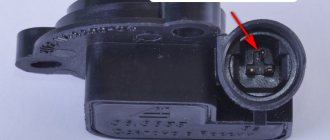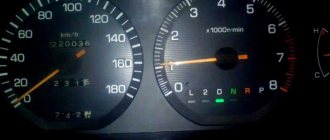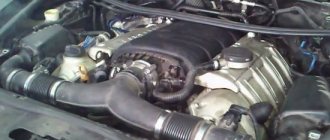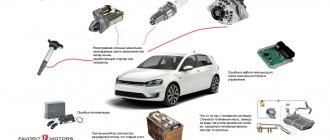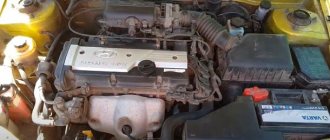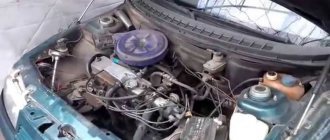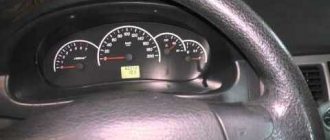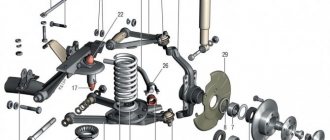Author: Fon_Enot
07 October 2022 00:56
Community: Autoworld
Tags: speed cars cars gasoline car diagnostics motors why speed
133485
2
There are many reasons why a car accelerates poorly. An experienced car enthusiast knows the features of his car well, immediately notices a drop in power and begins to look for the reasons.
0
Source:
Any engine loses a little power during operation. But even on engines with high mileage, the loss is on average about 10% of the declared value and the driver hardly notices it. But, if the car begins to accelerate poorly, engine traction is lost, the engine loses throttle response when you press the gas pedal, it becomes difficult to operate the vehicle. This problem requires diagnosis and solution. Sometimes the reason for the loss of overclocking power can be very simple. Like, for example, from one of the car forum participants: “I bought an excellent car of the **** brand (station wagon) 2012. V=2l, automatic. The gas pedal is a little tight when you press it to the floor - there is no acceleration dynamics. It feels like it’s not 2L, but 1.6-1.8L. Before that I drove the same one, only a sedan - it is much faster. What could be the reason? Or is this normal for a station wagon? In response, he receives a shocking confession: “Once, when overtaking, I also encountered the fact that the dynamics had disappeared. It turned out that the MAT was rubber, it was like that, it folded in half under the pedal. I unfolded it - and everything was in order.” A couple of hours later, on the same forum, the owner of a new car made a revelation: “Beautiful! I think, let me really take a look - maybe a rug? I looked into the interior, and there was actually a RUG ***** stuck under the pedal! Corrected it and flew 150 km/h. Bliss! THANK YOU))))". Let's be happy for those who were able to fix the problem in such a simple way. For those who pick up speed slowly and the mat has nothing to do with it, we’ll tell you what other reasons there could be.
The main reasons for the lack of engine dynamics
A driver who constantly operates a car can easily detect a deterioration in the dynamic characteristics of the engine, which manifests itself in sluggish acceleration, poor traction, and increased fuel and oil consumption. These processes are often accompanied by the appearance of bluish or black exhaust. Most often this is due to the following reasons:
- Insufficient heating of the power unit.
- Poor quality of fuel used.
- Clogged air filter and malfunction of the air supply system.
- Problems with the gas distribution mechanism.
- Malfunctions of fuel supply systems.
- Sensor malfunction.
- Ignition system malfunctions.
- Weak compression in the cylinders.
- Incorrect operation of the vehicle's ECU.
- Specific malfunctions of engines with a turbocharger or carburetor.
Why does a car accelerate poorly?
Owners of used cars often encounter the problem that the car stalls when accelerating. This can be expressed in different ways:
- From the very start, pressing the gas pedal to the floor, the driver hardly feels any feedback from his iron horse, the car either picks up speed very slowly or does it jerkily;
- The problem may occur when overtaking. Drivers often describe it this way: “when I try to overtake a car, I change lanes, press the gas pedal to the floor, but the car doesn’t move, it feels like someone is holding it by the rear bumper.”
The car does not accelerate
There can be a great many such descriptions, but the reasons for such behavior of the car are often the same.
First of all, this is, of course, the wrong job:
The design of the car’s fuel system (injector or carburetor) is also important.
Fuel quality
The use of high-quality gasoline or diesel fuel is the key to long-term engine life and obtaining maximum power indicators from it. But none of the drivers is completely immune from refueling with low-quality fuel, the use of which threatens not only a significant reduction in power indicators, but also the inability to start the engine. Regular use of low-quality gasoline manifests itself in intensive formation of carbon deposits on the cylinders, pistons, catalyst and exhaust manifold, as well as increased wear of the cylinder-piston group.
Motor problems
Critical wear of the cylinder-piston group of the power unit also leads to a decrease in power. There are other reasons why the engine revs poorly:
- valve burnout in one or more cylinders;
- lack of compression or its drop below the permissible level;
- incorrect adjustment of thermal clearances between valve stems and rocker arms;
- problems with the timing belt or chain drive.
Most of the listed malfunctions are detected by measuring compression. A burnt valve does not completely seat in its seat, which is why the pressure in this cylinder drops to 2-3 bar, and sometimes to zero. A general decrease in compression in all cylinders to 9 bar or less indicates “bad” piston rings.
Advice. Before announcing the verdict on the cylinder-piston group, it is worth checking the thermal clearances with a feeler gauge. If some “specialist” recently made an incorrect adjustment and tightened the valves, then the compression will also decrease.
Similar errors occur when replacing a timing chain or belt, when the marks shift by 1 tooth. The consequences are violation of valve timing and loss of power, plus unstable engine operation. Careless drivers who do not take care of their own cars encounter a similar effect: due to wear, the chain (belt) stretches greatly and jumps 1 tooth on the camshaft gear.
Too high oil consumption, penetrating into the combustion chambers through valve seals, also worsens the operating conditions of the power unit . From the inside, the chamber walls and spark plug electrodes become covered with soot, and the piston rings become coked and stuck. A sure sign of a malfunction is clouds of bluish smoke from the exhaust pipe.
Malfunction of the gas distribution mechanism
Breakdowns or incorrect adjustment of the gas distribution mechanism shifts the gas distribution phases from the optimal point and causes a sharp decrease in engine power. This occurs due to incomplete release of exhaust gases from the cylinders, or insufficient filling with air or the air-fuel mixture. If the timing chain or belt jumps one or more teeth, it disrupts the operation and adjustment of the mechanism that provides the required ignition timing depending on engine speed. A significant drop in power is also observed when the timing valves are incorrectly adjusted, when they are insufficiently opened or not completely closed.
Motor problems
Critical wear of the cylinder-piston group of the power unit also leads to a decrease in power. There are other reasons why the engine revs poorly:
- valve burnout in one or more cylinders;
- lack of compression or its drop below the permissible level;
- incorrect adjustment of thermal clearances between valve stems and rocker arms;
- problems with the timing belt or chain drive.
Most of the listed malfunctions are detected by measuring compression. A burnt valve does not completely seat in its seat, which is why the pressure in this cylinder drops to 2-3 bar, and sometimes to zero. A general decrease in compression in all cylinders to 9 bar or less indicates “bad” piston rings.
Advice. Before announcing the verdict on the cylinder-piston group, it is worth checking the thermal clearances with a feeler gauge. If some “specialist” recently made an incorrect adjustment and tightened the valves, then the compression will also decrease.
Similar errors occur when replacing a timing chain or belt, when the marks shift by 1 tooth. The consequences are violation of valve timing and loss of power, plus unstable engine operation. Careless drivers who do not take care of their own cars encounter a similar effect: due to wear, the chain (belt) stretches greatly and jumps 1 tooth on the camshaft gear.
Too high oil consumption, penetrating into the combustion chambers through valve seals, also worsens the operating conditions of the power unit . From the inside, the chamber walls and spark plug electrodes become covered with soot, and the piston rings become coked and stuck. A sure sign of a malfunction is clouds of bluish smoke from the exhaust pipe.
Fuel system malfunctions
When there is a problem with the power supply system of a gasoline engine, the loss of power is felt first. These include clogged fuel filters, interruptions in the operation of the fuel pump, power supply to the injectors, and depressurization of the fuel line, due to which the engine experiences a lack of fuel. In diesel engines, the most common problems with fuel equipment are wear of the injectors and fuel pump, depressurization of the fuel line, freezing of fuel in the fuel line and clogged filters.
Untimely engine maintenance, which results from irresponsible attitude towards the car
Finally, I would like to say that timely replacement of wires and spark plugs, filter elements and fuel pump filters, cleaning of the injector, throttle valve, correct throttle adjustment and other service procedures will give you the opportunity to get maximum power from your engine. Untimely maintenance of the internal combustion engine, on the contrary, can lead to destabilization of the engine and other more serious problems, including major repairs.
As for a car with gas equipment, both the engine power and its speed, and the overall service life of the internal combustion engine will depend on the correct configuration and installation, timely replacement of filters, as well as maintenance of other gas equipment elements.
Sensor malfunctions
In modern engines, to achieve a combination of high dynamics and low fuel consumption, the readings of various sensors are used to determine the position of the crankshaft, air flow, detonation in the combustion chamber, the composition of the exhaust gases, the position of the air and throttle valves, and external temperature. Data from them enters the engine ECU and affects its operating mode. The malfunction of one or another sensor makes the operation of the power unit less than optimal, which manifests itself in a loss of power.
Environmental influence
Ambient temperature can reduce the vehicle's traction. This is due to the concentration of oxygen in the atmospheric air.
- When the temperature rises from zero to thirty degrees, the amount of oxygen decreases by about 20%, therefore the efficiency of the motor decreases.
- This is especially noticeable in the mountains: every 100 meters when you rise to a height, the power of your car will decrease by 1%.
- This statement is especially true for 3 or 4 cylinder engines with a volume of up to one and a half liters.
High humidity also reduces engine performance. This effect is achieved due to the displacement of oxygen by water vapor, which, accordingly, reduces the engine thrust. In dry and cool weather the car drives more vigorously. But, as a rule, such changes are insignificant, so not every driver will be able to notice them.
Ignition system malfunctions
Most often, problems in the ignition system that reduce engine power relate to spark plugs, in which the gaps between the electrodes may be broken, carbon deposits have occurred on them, or the insulator may be damaged. Deterioration in spark quality or its absence is often the result of a break, broken contacts or integrity of high-voltage wires, ignition coil and distributor.
From clutch to filters
So, if the car does not pick up speed, the reasons for this may be the following. Firstly, if the car does not drive properly with a normal increase in speed, it could be a problem with the clutch, so it would be best to check the condition of the unit’s system. If this problem occurs in winter, when there is a stable sub-zero temperature outside, the cause may be frozen brake pads or a handbrake that was lowered before leaving, but in fact remained activated. Also, the answer to the question of why the car does not pick up speed may be hidden in the filters, when the air or fuel filter was simply clogged. The solution to the problem is their simple replacement.
Problems with the computer
All operating processes of a modern car are controlled by an electronic unit, which collects sensor readings and, based on the program embedded in it, regulates the operation of the engine. The operation of the ECU can be changed by setting different operating modes depending on the required flow rate and type of fuel used, vehicle operating conditions and other characteristics. Malfunctions in the operation of the electronic unit or its incorrect settings can lead to both loss of power and the inability to operate the engine itself.
Tires
Sometimes underinflated or overinflated tires can affect acceleration speed. Poorly inflated tires increase the area of contact with the road and, accordingly, make it difficult for the car to accelerate.
Oddly enough, overinflating tires also affects acceleration dynamics, but by reducing the contact area.
- It is worth paying attention to the difference in pressure in all tires.
- If there is one, the car will be pulled towards the underinflated wheels.
- The result is a decrease in speed, acceleration and controllability of the car.
Specific engine faults
Old car models with a carburetor are still quite actively used by domestic car enthusiasts. Failure of various components of such power systems manifests itself in a noticeable drop in engine power and has the following characteristic malfunctions:
- Fuel pump failures causing a drop in pressure in the system.
- Dirt gets into the carburetor, which clogs the jets and causes problems with the operation of the needle valve.
- Incorrect adjustment of the composition of the combustible mixture.
- Malfunctions in the operation of the carburetor dampers and economizer valve.
- Incorrect float operation.
Some new engine models have one or more turbines that force air into the combustion chamber, thereby increasing the amount of horsepower that the power unit is capable of producing. Breakdowns or disruptions in their operation are caused by a sharp drop in the throttle response of the power unit.
A drop in engine power should be the reason for vehicle diagnostics to identify the malfunction and completely eliminate it. It’s good if the cause of loss of dynamics turns out to be such easily removable reasons as low-quality fuel, clogged filters or old spark plugs. But malfunctions in the operation of the gas distribution mechanism, wear of the piston group and other more serious problems require immediate repair, as they can lead to significant damage and significantly higher monetary costs.
Lean mixture
The fuel mixture may be too lean to gain power.
Carburetor flushing
There are several ways to quickly fix this problem.
- Unwanted air leak. May occur due to loosening of the carburetor fastenings or wear of the gasket. If there is a suspicion of this malfunction, then you can confirm or refute this using soap foam . The joints are smeared, then the presence of a void or depression in the place of “leak” is checked.
- Freezing of condensate in the power system. This leads to blockage of passage channels. It can be solved by blowing the channels with a conventional compressor or pump. It is also necessary to check and blow out the jets. If blowing does not help, then cleaning with thin copper wire is allowed.
- The fuel pump may be clogged. It is also necessary to check the wear of its lever . Non-working parts are also cleaned or replaced. Particular attention should be paid to air holes.
- Damage to the fuel pump diaphragm can cause the engine to fail to rev. Along with this, it is necessary to check the strainer and the functionality of the pump valves. Flushing or installing new pump elements will help.
We recommend: The nuances of purchasing Cummins spare parts
